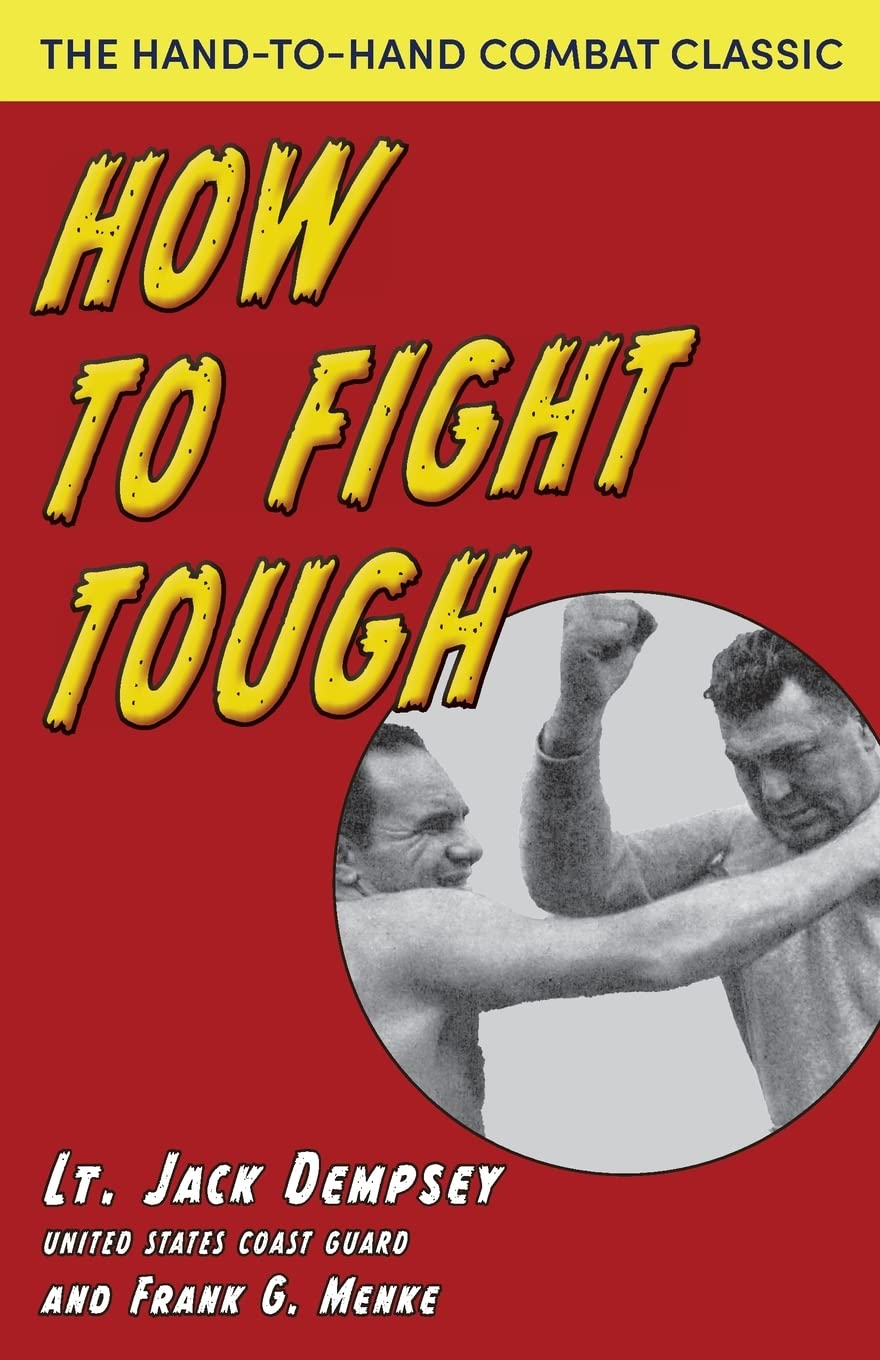The Self-Defense and Close Quarters Combat Classic by a Boxing Legend
How to Fight Tough by heavyweight boxing champion Jack Dempsey covers all you need to know about close quarters combat-both offensive and defensive techniques. Each of the 17 lessons illustrated with photographs to give you a deeper understanding of the maneuvers. From "The Head Clamp" to "Disarming Your Opponent" to "Hammering Your Way Out of a Stranglehold," you will learn how to take care of yourself in the worst of situations.
Dempsey served as a Lieutenant in the US Coast Guard during World War II. His role was to direct an intensive physical fitness program and train incoming recruits in the art of close quarters combat. The methods outlined here were the basis for combat readiness exhibited by American ground forces in reclaiming Europe's cities and towns during the war.
Through all the lessons Dempsey emphasizes speed as the surest way to make sure you end up on top and in control. In his own words, "The trick in gouge fighting, just as in any other type of combat, is to expose the enemy's weakness first, to beat him to the punch, and to hit hard."
Here are techniques to survive and dominate in life and death situations. A must for any close quarters combat students, free style fighters, or those wishing to improve his or her self-defense capabilities.
About the Author
Nearly a hundred years after his stellar career in boxing, Jack Dempsey remains an icon in the sport. Reigning as heavyweight champion of the world from 1919 to 1926, his aggressive attitude in the ring, along with a unique style and hammer-like punches, made him one of the most popular athletes of the 20th century.Born in 1895 in Manassa, Colorado, William Harrison "Jack" Dempsey grew up poor in a very large family. His brother taught him how to box, and as he came of age, he found he could earn a living by showing up at hardscrabble bars in mining towns, and challenge all comers to bare knuckles brawls. He usually won and was rewarded by bar patrons, which earned him a better living than he might have had with a conventional job. Beginning as a professional in 1914, Jack Dempsey rapidly established a strong record and a promising career. In the early years he racked up many wins, and also several "draws" with no winner-in a time when, if a fight went through all rounds without a knockout, it was considered a draw. The U.S. entered World War I in 1917, and Dempsey was of prime drafting age. He worked in a shipyard during the war, and continued to box. A scandal later broke out when Dempsey's ex-wife accused him of falsifying information to avoid the draft. The draft board had listed Dempsey as "4-F" or ineligible because he was supporting many family members. She claimed he had no dependents. His name was cleared, but many veterans continued to judge him harshly long after the war's end.Dempsey's professional career ended with one of the most well-known bouts of the 20th century: a rematch against Gene Tunney. The match took place in Chicago in September 1927. It had the largest purse on record at the time, and was covered live on the radio by hundreds of reporters. Tunney dominated and claimed the title. In retirement, Dempsey appeared in exhibition bouts and became well known for his philanthropy. Because of his widespread fame and popularity, he was approached by MGM to star in the 1933 film, The Prizefighter and the Lady. Along with heart throb Myrna Loy, the film starred 3 professional boxers-Max Baer, Primo Carnera, and Jack Dempsey. He also opened a successful restaurant in New York City.In December 1941 the U.S. entered World War II, and Dempsey enlisted, despite being, at 46, older than the vast majority of recruits. He was commissioned as a lieutenant in the U.S. Coast Guard in 1942, and was assigned to be director of physical education, where he led a team of experts tasked with training recruits in close-quarters combat. His fame, along with his obvious mastery of the subject, was a tremendous morale booster for new soldiers. How to Fight Tough was another result of this experience.During this time Dempsey also made appearances for fundraising and boosting troop morale, and served on several ships, including the attack transport USS Arthur Middleton during the invasion of Okinawa in 1945, achieving ultimately the rank of commander. Although his active service ended in 1945, he stayed in the Coast Guard Reserve for another seven years.Jack Dempsey remained friends with many members of the boxing community, including former rivals; in some cases, offering financial support. He died in New York City in 1983, at the age of 87.


